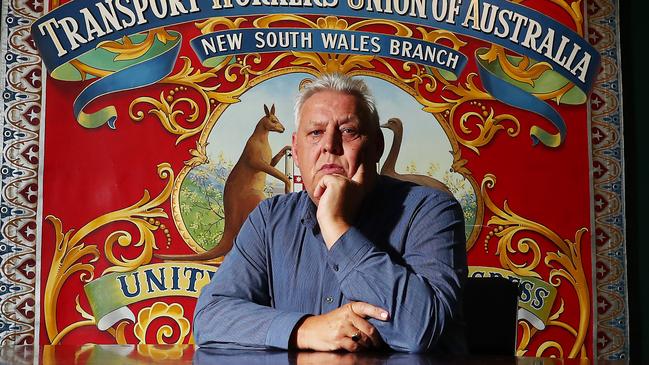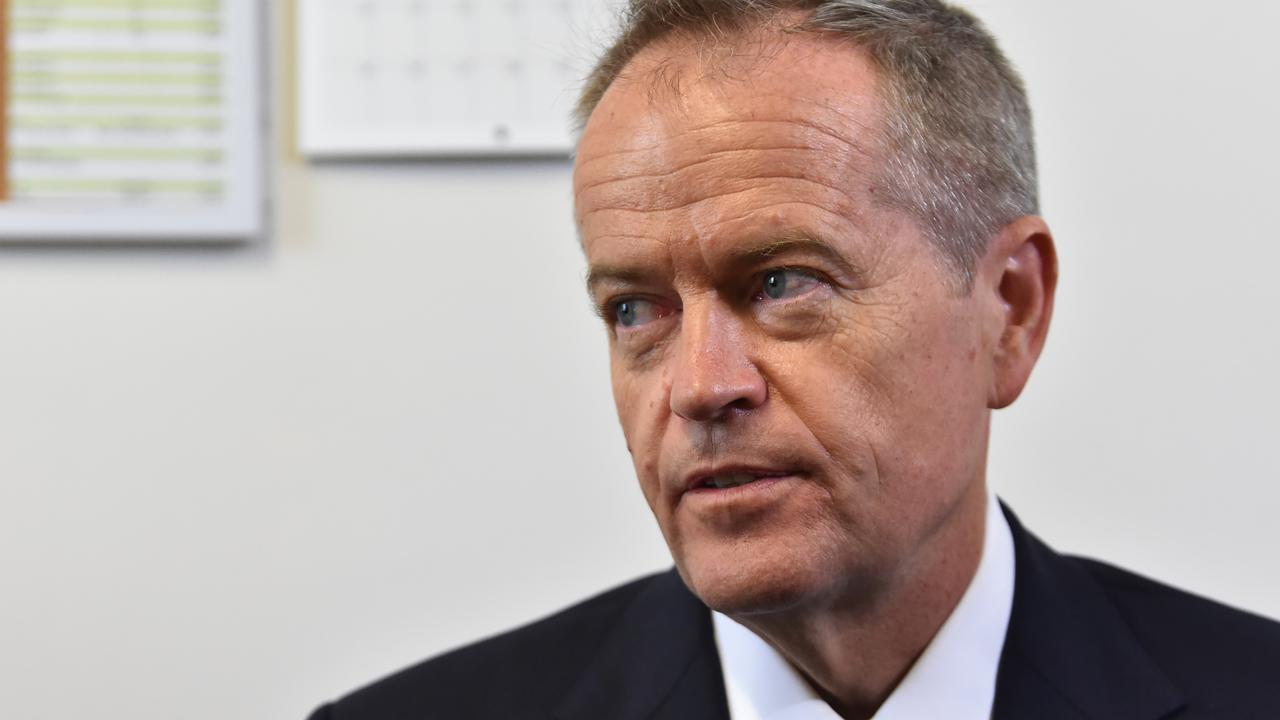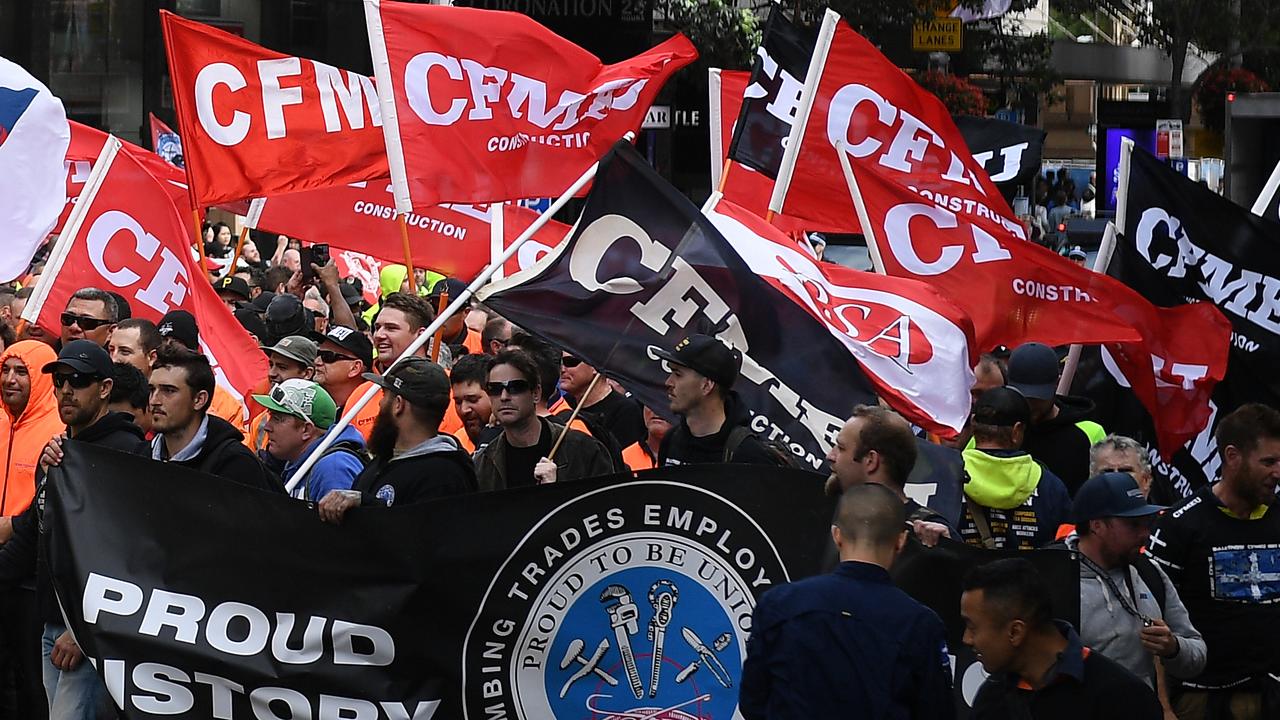Union’s NSW head under fire over 38 per cent pay rise
The head of the Transport Workers Union in NSW is under fire over a 38 per cent pay rise.

The head of the Transport Workers Union in NSW faces internal protests over audited accounts that show he received a 38 per cent pay rise over two years, while other full-time officials and truck driver members received as little as 1.5 per cent a year over the same period.
Critics of Richard Olsen, secretary of the TWU’s largest branch, claim he received a salary boost from $133,262 to $183,897, according to two years of audited annual financial accounts ending in December 2017.
A small part of the increase can be explained by Mr Olsen moving from TWU deputy to branch secretary in late 2016, but several long-time members of NSW TWU management committees told The Australian they had no recollection of approving these pay rises, or of committee minutes discussing them. Olsen supporters say all had been approved.
Several management committee members also questioned Mr Olsen’s leadership style, which allegedly included some flamboyant spending, when union membership and revenue had declined.
The Federal Court fined the TWU $271,000 in February for failing to remove unfinancial members from its books. Mr Olsen’s branch was slashed by more than half, from 40,000 to 17,000 members. Pending an appeal, the court rejected the union’s professed “incapacity to pay” in May.
Critics of Mr Olsen highlight his alleged desire to name a new $4 million headquarters under construction in Sydney’s west “Richard Olsen House” when he had been leader for just two years and originally came from another union, Bill Shorten’s AWU.
Also puzzling to them is how Mr Olsen, addressing a large gathering at last year’s TWU Christmas party, held at Sydney’s five-star Sheraton Grand hotel, opposite Hyde Park, allegedly described himself as “immortal”.
Inside the TWU it is accepted Mr Olsen’s salary would have increased in 2016 because of the move from TWU deputy to branch secretary. But Mr Olsen’s dissenters claim such a big jump in his salary was not justified over two years, and query whether it was approved.
As part of background information provided to The Australian by Mr Olsen through a spokesman, he said all matters had been properly approved by the union’s committee of management and finance committee, as required. Itemised spending less than $1000 did not require approval.
Mr Olsen said his salary for the 2016 financial year was really $166,454 — not $133,262 as stated in the December 2016 audited financial report.
According to the TWU leader, his NSW branch subsequently discovered an “anomaly” during preparation of the 2017 financial report in which $17,200 of his 2016 salary had been counted as employee superannuation contributions, not salary. His stated salary was then altered from $133,262 to $166,454 in the next accounts.
Mr Olsen claimed a further increase of $17,443 — boosting his declared salary entitlement to $183,897 according to the December 2017 audited accounts — was “not a permanent salary increase” because it included some cashed-out annual leave. This higher $183,978 figure, he said, also included “a salary increase of 1.5 per cent”.
The TWU’s leadership in NSW has been warring internally since The Australian first reported in February the abrupt resignation of long-time branch president George Clarke, a former truck driver and member for 50 years.
Mr Clarke’s chief complaint, prompting his exit as reported by The Australian, was his objection to sitting as chairman of the union’s weekly finance committee and being asked to approve spending after the money had been spent — not before, as required.
He was especially upset at what he claimed was no prior approval for $8000 spent helping relatives of a TWU message service employee in West Africa following a mudslide, $5000 on legal fees for several administrative staff on work visas at risk of deportation to India, thousands of dollars spent on lounge suites for Mr Olsen’s office and the return of “long lunches” for union officials at city restaurants costing $1000 or more.
Mr Clarke had no recollection of approving pay rises for Mr Olsen above 1.5 per cent before he quit a year ago. His successor as president, Charles McKay, has now decided not to renominate for president as the union’s management committee undergoes significant personnel changes, leaving Mr Olsen looking for a replacement for the second time in 12 months.
George Oie, the NSW TWU’s long-serving head delegate at Qantas and a member of its branch committee of management in 2016 and 2017, said pay rises for Mr Olsen needed to be approved by both the BCOM to which he had belonged in those years, and its overall committee of management to which Mr Clarke had belonged.
He said he was perplexed how Mr Olsen’s salary could rise 38 per cent to almost $184,000 over just two years. He had no recollection of approving pay rises for Mr Olsen above 1.5 per cent while serving on the union’s BCOM.
Nor did he recall approving any $17,443 “monetising” of annual leave in 2017 as Mr Olsen claimed, and questioned how $17,200 in 2016 that Mr Olsen suggested was an “anomaly” could shift between super and salary in different audited accounts.
Mr Olsen told Mr Oie in writing last month he was expelled from the TWU after 27 years’ membership for speaking out to The Australian in February about its internal problems. Mr Oie had already been removed as head union delegate at Qantas.
Mr Oie is a recipient of the ACTU’s delegate-of-the-year award after winning back pay for 18 women Qantas employees, and has received his union’s own national delegate-of-the-year award for recruiting large numbers of new members.
Background information provided to The Australian by Mr Olsen said “nobody at this office” could recall him using the word “immortal” to describe himself at the TWU’s recent Christmas function.
The information said the new union headquarters at Minchinbury in western Sydney would not feature a “Qantas scale model jet” or “marble floors” — despite senior TWU figures telling The Australian both had been raised with them by Mr Olsen.
Mr Olsen confirmed to The Australian in February that he wanted to name the new TWU headquarters after himself.
In background comments for this report, Mr Olsen seemed to retreat from the idea, saying the TWU committee of management was still to decide on “the name of the building” and the name suggested was “always a humorous rather than serious suggestion”.



